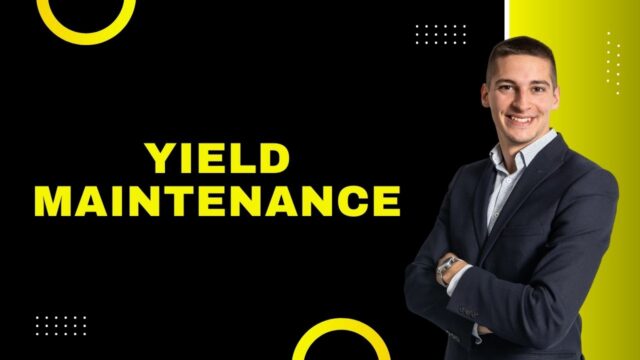
Yield Maintenance in Commercial Real Estate Loans
Yield Maintenance refers to the penalties you pay if you pay off your loan early. The penalty is assessed if you pay off your loan before the agreed-upon term. In most cases, you can avoid paying yield maintenance if you pay off your loan on time. It’s better to avoid the penalty than to pay it later. In this article, we’ll go over some of the main reasons to pay off your loan early.
Prepayment penalty for early loan payoff
Lenders sometimes charge borrowers a prepayment penalty for early loan payoff. Interest is the major source of profits for lenders, and if you pay your loan off early, you risk losing out on this money. It’s important to understand how prepayment penalties work before deciding whether to pay off your loan early. You’ll be surprised at how expensive it can be. However, there are ways to reduce the prepayment penalty.
Most lenders will charge a 2% or 1% prepayment penalty, depending on how much of the outstanding balance you’d like to pay off early. The percentage can range from 2% to 3%. However, the amount you pay will depend on the amount of money you owe and the type of loan you have. Some lenders also cap the prepayment penalty at a certain amount, which may be capped at the lesser of a percentage or a dollar amount.
Calculator
A yield maintenance calculator is an essential tool for understanding the prepayment penalty and payoff of your real estate investment. It is useful for borrowers who want to assess the financial benefits of extending the term of their mortgage. The calculation is not easy to perform because rates are constantly changing, and no real estate lender can anticipate the exact amount of debt a borrower will owe in the future. Therefore, understanding the yield maintenance calculator is vital to making the most informed decision when applying for a loan.
The yield maintenance penalty is calculated by plugging in the appropriate numbers into an equation. You can use a yield maintenance calculator or spreadsheet to calculate the penalty. For example, assume a homeowner refinances a 30-year, 4.5 percent mortgage after 10 years because rates are low and there is $243,778 left on the loan. Assume the current yield on a two-year Treasury note is 2.2447 percent.
Lenders
There are two major types of defeasance: defeasance and yield maintenance. Defeasance is always cheaper than loan maturity because the loan’s yield can be used to buy the securities. Defeasance, on the other hand, involves paying transaction fees to third parties and a processing fee to the loan servicer. The benefit of yield maintenance is that it’s easier for borrowers and requires less time.
While prepayment penalties can be expensive, yield maintenance allows lenders to ensure that they’ll still earn the same rate of return as their loans. Because the current market rate of interest is higher than their original rate, the lenders can collect more interest. However, when they relend the prepayment, the yield decreases to zero, lowering the lender’s profit. The lender will typically impose a 1% minimum prepayment fee.
Defeasance clauses
Defeasance clauses in commercial real estate loans provide lenders with the ability to terminate a loan if a borrower fails to meet certain requirements. Defeasance clauses prevent prepayment penalties by allowing borrowers to substitute other collateral. Typically, this occurs if interest rates are higher than the original loan amount. However, the defeasance clause allows borrowers to purchase replacement collateral at a discount.
Defeasance clauses in loan documents have many practical implications for borrowers. Generally, yield maintenance is cheaper than prepayment. However, the cost of yield maintenance is directly proportional to the parameters set forth in the loan documents. In a rising-rate environment, yield maintenance is the most affordable option. However, under favorable defeasance terms, the borrower can use agency securities as collateral. In unfavorable defeasance conditions, the borrower must provide collateral sufficient to meet the full repayment requirements through maturity. This collateral must be U.S. Treasuries or other U.S. government securities.
Impact on refinancing
In most mortgage loans, yield maintenance is included in the loan contract as a prepayment penalty. It ensures that lenders receive compensation for losses when borrowers prepay a loan early. This prepayment penalty is calculated by discounting remaining loan payments to present value and subtracting the outstanding principal balance. Often, yield maintenance provisions also include a minimum payment of one percent to three percent of the outstanding principal balance. These provisions effectively put a floor on the yield maintenance premium.
When rates rise, the impact of yield maintenance on refinancing can be beneficial. While most prepayment penalties require a minimum amount to be paid at the time of prepayment, yield maintenance clauses are usually zero. In addition, prepayment clauses make loans assumable. A buyer can assume the mortgage with the original interest rate and still receive a discounted interest rate. But it’s important to keep in mind that yield maintenance is a common and significant factor in refinancing mortgages.

































